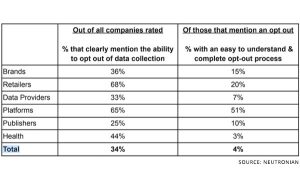Recognizing employees is an integral part of running your business. Dina Gerdeman, contributor for Harvard Business School, writes, “Companies with strong recognition programs enjoy increased productivity, lower job turnover, and greater returns on investment than other companies in the same industries.” In a large organization, managers and team members can’t simply be casual and informal about expressing appreciation. Often employees are spread out around the globe, in the field, or working remotely. Gerdeman writes, “More than 80 percent of American employees say they do not feel recognized or rewarded, despite the fact that U.S. companies are spending more than a fifth of their budgets on wages.” Employee recognition software makes it possible to notice and appreciate each person’s effort, regardless of scale.
If you’re ready to take the next step in choosing the right employee recognition software, we’ve distilled 11 points for you to keep in mind. Before you can put those tips to use, however, there are two pieces of knowledge you need:
You need to know how to capture employees’ interest
Nationwide, only 37 percent of workers say they are satisfied with their company’s way of expressing appreciation, but employees won’t use a program they don’t know much about. Your employee recognition program vendor should be able to help you spread the word about the platform that you are leveraging. An expert vendor will assist your company leaders in shaping an impactful communication strategy, through messaging campaigns that reach every employee. It’s also essential to realize that employees who are on the go may rely on mobile devices more than on their computers, and any recognition program has to flow through every channel.
You need to know what top employee recognition software providers offer
Before you can select between products, you need to know what’s possible in this realm of software. One excellent indicator to look for is high customer satisfaction. Providers of employee recognition software should become your company’s partner, and should demonstrate interest in your success that extends beyond mere salesmanship. Your software vendor should also be active alongside you, committed to maximizing usage and adoption of your recognition program. It’s only when a platform attracts employees’ interest and keeps them engaged that it can become useful as a channel for recognition.
The following 11-point checklist will give you a quick overview of how to select your employee recognition software:
1. Security
Your company’s advantage resides partly in its proprietary data. A quick way of checking the seriousness of a recognition platform’s approach to security is to see if it has a security certification. The ISO 27001 or similar internationally accepted certifications exhibit an organization’s commitment and investment in security. Selecting a vendor with these certifications will be vital in getting your Information Security stakeholders on board with a new platform.
2. Compatibility with existing systems
How many different systems are simultaneously in use in your organization? In HR alone, you’re probably using multiple products, and that doesn’t even start to include all the job-specific software your people rely on. A recognition platform needs to integrate seamlessly with core workplace systems, especially those used in HR. A single sign-on will enable your staff to access all the important HR systems at once.
3. A unified solution
If you have programs and departments spread out across a wide geographic area, each one may have developed its own process for recognizing employees. When you’re evaluating employee recognition software, you’ll want one that can unify all of these siloed solutions and bring them together in one cost-effective dashboard.

4. Real-time reporting
You don’t want to have to pre-plan or schedule your access to recognition data. Instead, your software should be at your beck and call, able to give you valuable insights and tell you at any moment in real-time how many recognitions have been sent and received and how your budget looks.
5. Budgetary awareness
When your recognition program includes monetary recognition and reward redemptions, you need to know how much you can spend. Managers need flexibility in directing this funding, while feeling confident that they are staying within the overall planned investment. Top recognition platforms allow program managers and stakeholders to quickly define recognition spend budgets for every employee level.
6. Fun user experience
The employee recognition software you choose needs to reflect the values and mission of your organization, while also providing employees with an easy user experience. The concept of fun is a worthwhile one, and it naturally pairs with innovation and simplicity. Pick a platform that your employees can play with and one that they will look forward to using on a regular basis.
7. Cutting-edge knowledge
What does your industry average look like, when it comes to average program cost, number of recognitions sent by function, annual spend, and other KPIs? When you’re selecting employee recognition software, the vendor should have such benchmarking data at their fingertips. Furthermore, industry best-practices continue to evolve, and your best authority on these trends should be provided by a dedicated employee recognition expert and partner.
8. Tie-ins to company values
Organizational health can be measured by how strongly your workplace culture aligns with company values. Every employee recognition must tie back to a company value. Top employee recognition software makes this easy, and also makes it transparent across the organization.
9. Ease of recognition
When you’re looking to build a culture of recognition in your company, it has to be very easy for employees to express their appreciation for each other. The best platforms facilitate spontaneous recognition that flows in all directions through the organization, rather than only from the top down. Simplify the recognition process for every employee across all levels of your organization.
10. Public praise
By its very nature, praise and recognition should be a public matter. An employee who’s being praised deserves to have their excellence seen by everyone around them. Transparency not only makes the recognition more meaningful and promotes corporate values across the organization; it prevents misuse of monetary rewards that otherwise could go unnoticed.
11. Social recognition
Non-monetary or social recognition has enormous power. Your employee recognition platform must incorporate this option, in order to activate all the psychological motivators that are not driven by cash-value rewards. Workers need to feel a sense of belonging, of making a contribution to their team, and of doing work that is intrinsically valuable in itself. In fact, social recognition is 4X more likely to improve stock prices and 2X more likely to improve individual performance.
Choosing the right partner for your company’s employee recognition software is a vital component of future success. Download our Buyer’s Guide to Recognition Software to gain a deeper insight into each of the points outlined above and learn how to build a high-impact recognition program.
Business & Finance Articles on Business 2 Community
(51)






